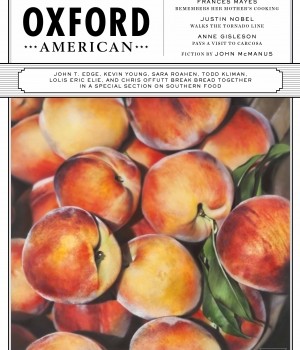Happy Spring, everybody!
I am thrilled to share that my story about artists’ response to the U.S./Mexico border wall has been published this month by the Oxford American. Here is the opening:
The first object revealed itself immediately: a man’s black Reebok, size nine. That there was only one, inches from the iron bars, implied struggle. The absence of dust on the shoe—which coats everything in this swath of Texas—meant it hadn’t been here long.
“It wasn’t when I took my walk this morning,” said Mark Clark, a painter who lives half a mile away.
I noticed a second object in the dirt: a water bottle. Like the sneaker, it was also stranded in the no-man’s land on the other side of the wall, between the eighteen-foot-tall barrier and the Rio Grande. My friend, the artist Susan Harbage Page, saw the bottle, too. After making a photo with her Canon 5D, she slipped her fingers through the three-inch gap between the pylons. She unscrewed the bottle’s cap. Carbonated water fizzed out, drenching her sleeves. She drained and tugged the bottle through the wall—our border wall.
We walked along, and objects cropped up every fifteen to twenty feet. A belt. A shoelace. A toothbrush snapped in two. Page photographed each one, then put them inside her oversized shopping bag emblazoned with La Virgen de Guadalupe, the patron saint of Mexico.
Page has been making annual trips to the Texas-Mexico borderlands since 2007, and one of her projects is walking along the river in search of objects people leave behind when they’re crossing. She photographs the items in situ, then brings them back to her studio in Chapel Hill to add everything to her “anti-archive,” which will eventually become an online searchable database. The last time she counted, she had collected nearly 800 objects, ranging from Bibles to pill bottles, combs, wallets, passports, clothing, and slips of paper scribbled with telephone numbers.
“The first one I found was a toothbrush. When I saw it, I just felt it in my whole body. I didn’t even know whether I should pick it up,” Page said. “It was a powerful remnant of that person’s life, and I felt it needed to be seen. That’s what the anti-archive is: the unofficial history of immigration. The one nobody wants to look at or deal with.”
Many of the archive’s contents were found right here in Hope Park, a leafy strip of green that slopes down to the Rio Grande. Standing on its bank, you are either a seven-minute walk to downtown Brownsville or a seven-minute wade to Matamoros. Long ago, the city built Hope Park to commemorate its close ties with Mexico. Tree-lined and bike-trailed, it would be beautiful were it not for the eighteen-foot steel wall cleaving through.
“They have painted it black to make it look better, because it’s rusting like a motherfucker,” said Clark, gripping a stake in his fist. In his early sixties, he has a regal gait and a beard straight out of Quixote. “It has two or three coats of paint on it, and it’s only three years old.”
He pointed out an imprint of a hand about halfway up a steel bar. As Page focused her camera lens, I noticed that, at a certain angle, the sun revealed dozens of other handprints—shoeprints too. Clark said that after a good rain, immigrants leave a trail of mud all the way up one side of the wall and halfway down the other.
“I once saw some guy get thrown out of a four-door sedan, run across the street, scale the fence, and hop over the other side in fifteen seconds flat,” he said.
Down the path, we came upon a storage facility surrounded by a chain link fence topped with concertina wire. A gray jacket was trapped high inside the coils. Page stood on her tiptoes and pulled. In her mid-fifties, she has pixie blonde hair and was wearing turquois glasses and a bright red vest. After a struggle, she released the shirt from the razor blades and stuffed it inside La Virgen. Clark unearthed a shirt half-buried beneath the trail. “Sometimes you come out here and it’s like a ropa usada,” he said, using the Spanish term for a used-clothing store.
The border wall ended a few feet later at the offices of U.S. Immigration and Customs Enforcement, where a chain link fence began. Clark showed me a section where some of the links had been snipped, creating a gaping hole. Half of it had been mended with plastic, but the breach was still big enough to slide a package through. He picked up one of the broken links in the dirt and dropped it into my palm.
“Take it,” he said. “It’ll be your souvenir of Mexican ingenuity.”
For the full story (which includes artwork by Susan Harbage Page, Stefan Falke, Mark Clark, and Rigoberto A. Gonzalez, among others), please drop me a line and I’ll send along a PDF. Gracias y saludos!


Wow, Stephanie! That’s powerful. I would love to read the whole story.
I worked for 25 years in an elementary school as a “bilingual para” and heard many stories from the kids AND
their parents. I completely sympathize and would do the same thing if I was a mother or father in Mexico.
Sorry, maybe that didn’t make sense. What I mean is, I would go North, too, and risk everything to give my
children a better life.
Wonderful story, Stephanie. I would love to see the pictures and read the rest. Also enjoyed your story in “Amazing Place” about moving to NC. Kudos!
Poweful story, l would like to read more.